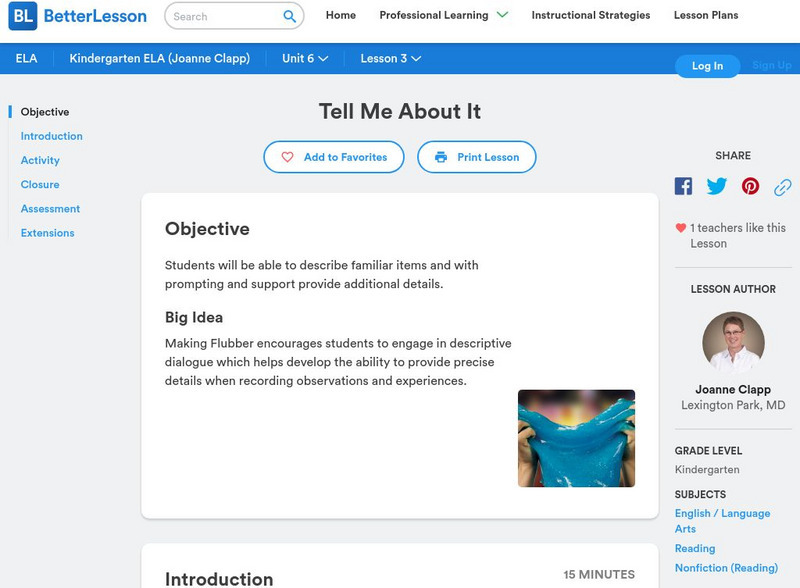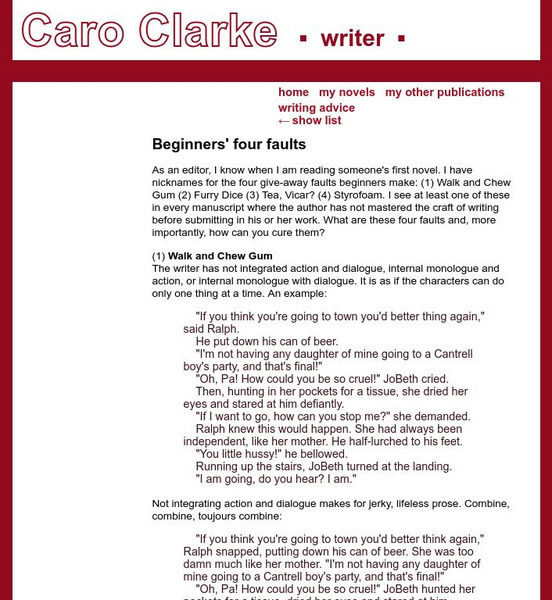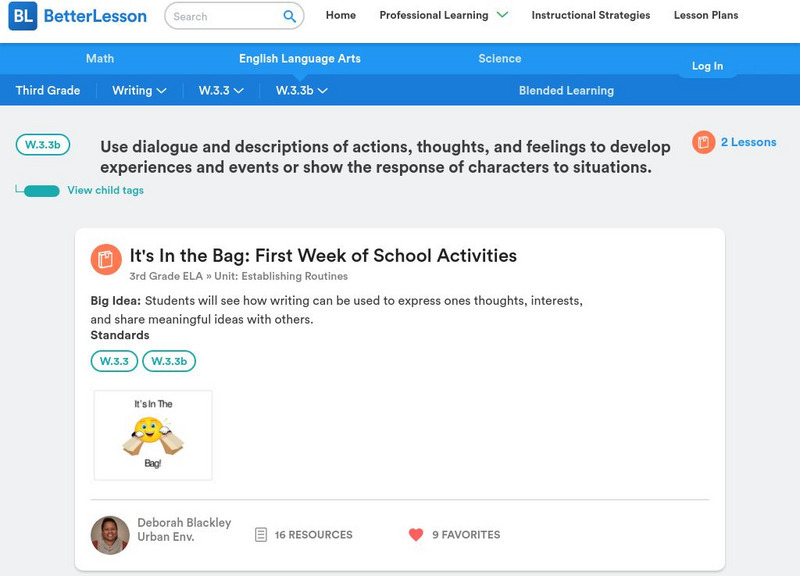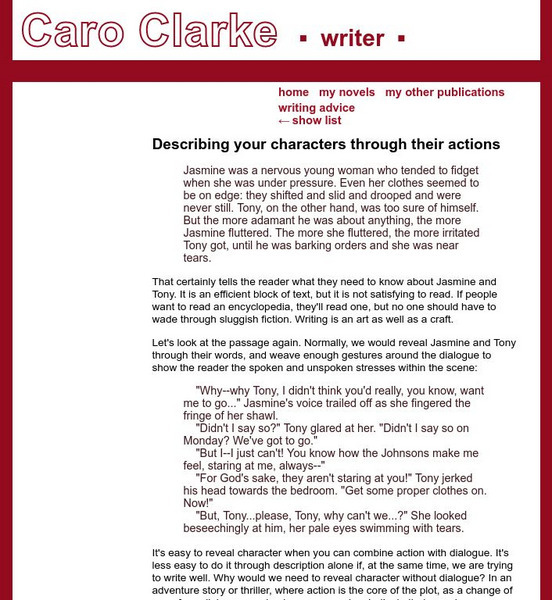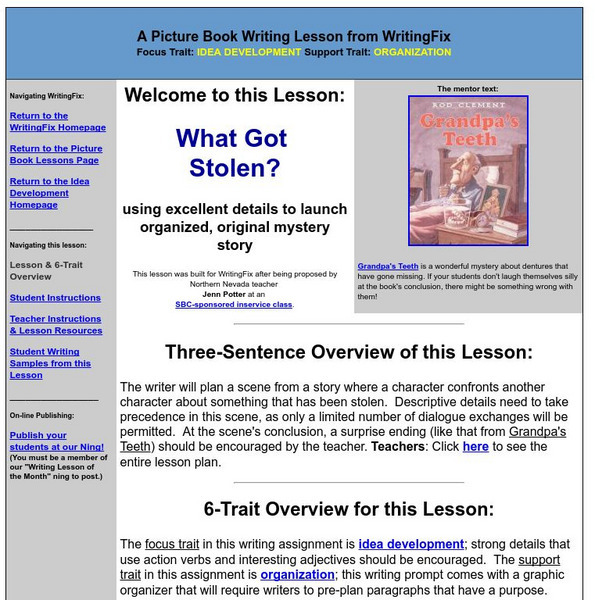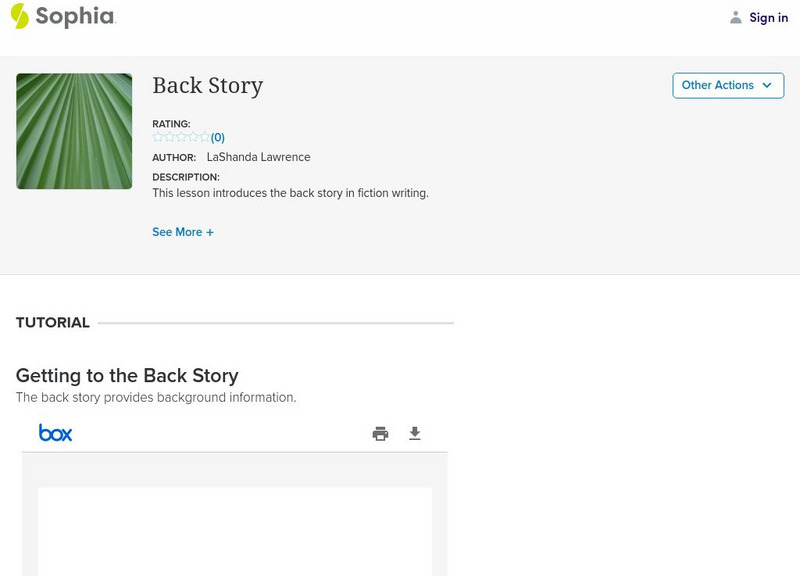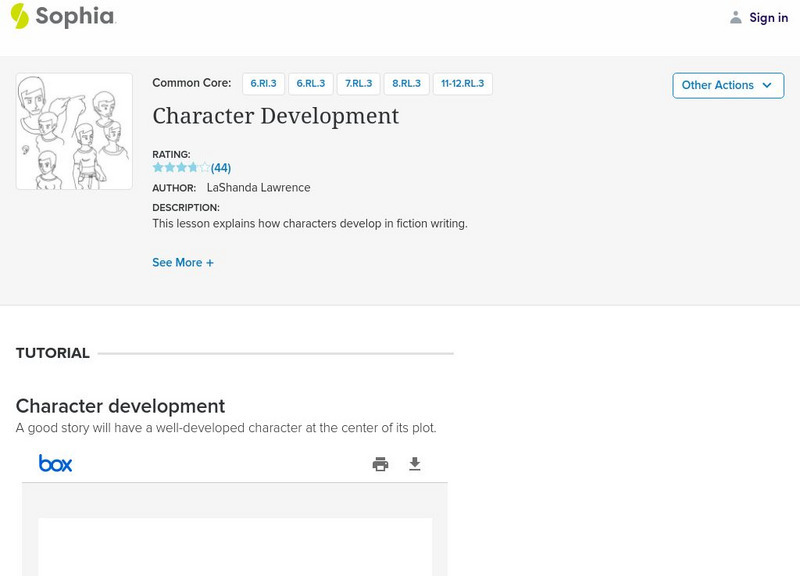Scholastic
Scholastic: Writing With Writers: Descriptive Writing With Virginia Hamilton
This workshop helps students increase their skills in descriptive writing by following tips and suggestions from writer Virginia Hamilton. After reading about Hamilton, students write their descriptive pieces and publish them online. A...
Other
National Writing Project: Collaborating to Write Dialogue
In this lesson, writing partners work together to develop a plot and characters. The lesson emphasizes the use of dialogue to develop the characters and plot of the story.
Other
Barbara Greenwood's Guide to Writing for Children [Pdf]
Barbara Greenwood, a Canadian author of numerous historical fiction books for children, has written this thirty-page writing guide where she explains the process she goes through in constructing a story. She covers such key topics as...
BBC
Bbc Bitesize Revision: Dialogue and Description
As part of a revision and writing section of BBC Bitesize, this page provides several tips involved in writing dialogue and description for short story fiction.
Better Lesson
Better Lesson: Tell Me About It
Students will be able to describe familiar items and with prompting and support provide additional details by making Flubber. Making Flubber encourages students to engage in descriptive dialogue which helps develop the ability to provide...
Caro Clarke
Caro Clarke: Writing Advice: Beginner's Four Faults
This site is a personal site from Caro Clarke. The third installment in this series looks at the four major mistakes made by beginning authors. The main idea of this article is that the author needs to be able to combine dialogue with...
Education.com
Education.com: W.3.3 B Worksheets: Use Dialogue and Descriptions
[Free Registration/Login Required] A site with links to 30 worksheets that can be downloaded and printed for student use while building skills with standard W.3.3B: Write Narratives to develop real or imagined experiences or events using...
Better Lesson
Better Lesson: W.3.3.b: Use Dialogue and Descriptions of Actions
Links to 2 lessons and activities that build student skills in standard W.3.3.b: Write Narratives to develop real or imagined experiences or events using effective technique, descriptive details, and clear event sequences.
Caro Clarke
Describing Your Characters Through Their Actions
This is the tenth in a series of articles designed to help the new novel author. This article focuses on how to develop characters through their actions instead of simply relying on dialogue and description of thoughts. W.11-12.3d...
Writing Fix
Writing Fix: What Got Stolen?
After reading Grandpa's Teeth by Rod Clement, the writer will plan a scene from a story where a character confronts another character about something that has been stolen. Descriptive details need to take precedence in this scene, as...
Sophia Learning
Sophia: Back Story
This lesson introduces the back story in fiction writing. W.11-12.3c Narrative Org
Sophia Learning
Sophia: Character Development
This lesson explains how characters develop in fiction writing. W.11-12.3d Sensory/precise lang narratives
Education.com
Education.com: Rl.4.5 Worksheets: Explain Major Differences Between Poems, Drama
[Free Registration/Login Required] A site with links to 8 worksheets that can be downloaded and printed for student use while building skills with standard RL.4.5: Explain major differences between poems, drama, and prose, and refer to...
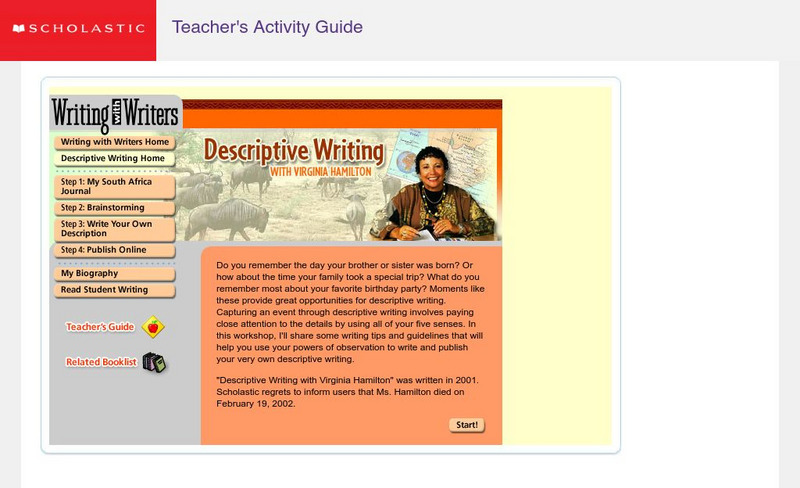
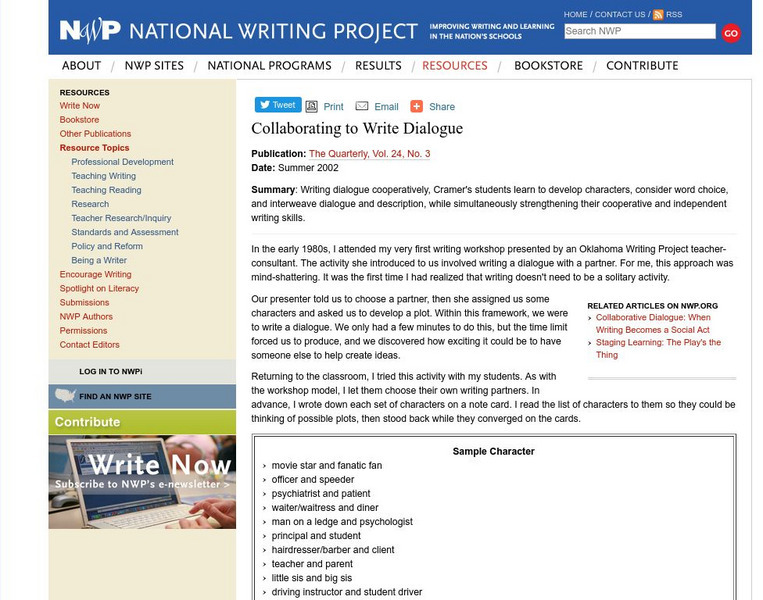
![Barbara Greenwood's Guide to Writing for Children [Pdf] eBook Barbara Greenwood's Guide to Writing for Children [Pdf] eBook](https://d15y2dacu3jp90.cloudfront.net/images/attachment_defaults/resource/large/FPO-knovation.png)

